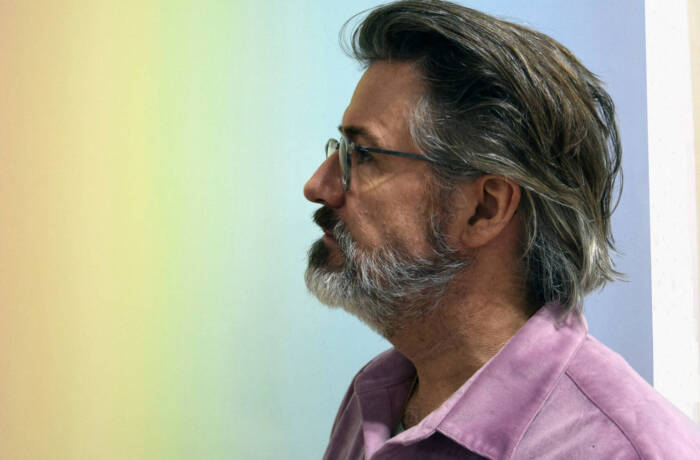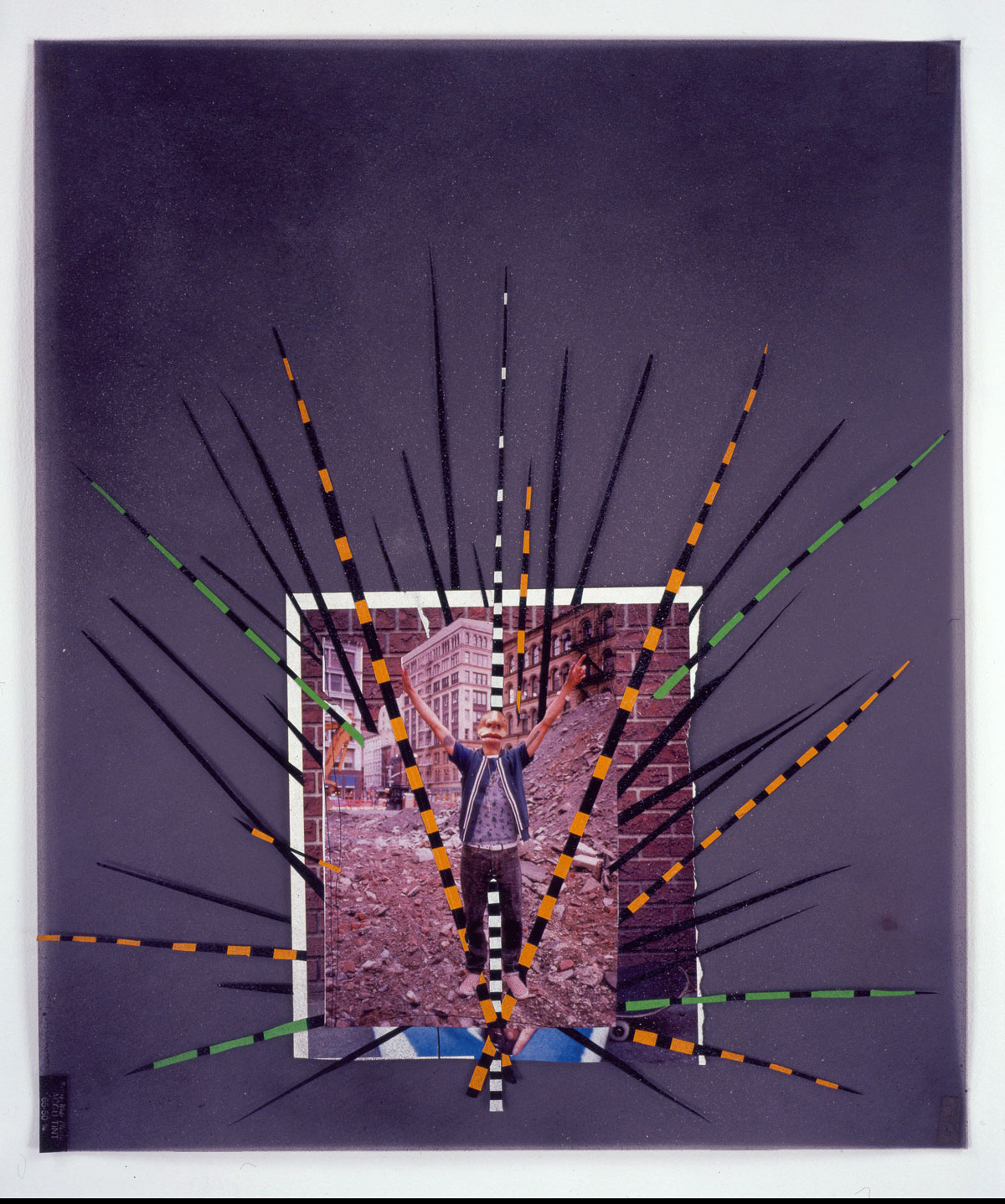
Crown (2006) by Wangechi Mutu. Courtesy of Deutsche Bank Collection
One of the key elements of this year’s edition of Frieze New York was to have been an exhibition drawn from the legendary art collection of Deutsche Bank, to celebrate its 40th anniversary. The fair may have been postponed, but the significance of the collection, its works and ethos, is undimmed, says Wallace Ludel
At Deutsche Bank’s headquarters in New York, several hundred exceptional works of art are hung throughout the building’s 47 floors. The Wall Street tower was built in the 1980s and certain floors still retain that era’s American wooden-clad banking aesthetic; long oak and cherry desks and accents provide a warmer, more characterful context for the high-calibre artworks than a typical white-cube gallery setting. The click of dress shoes and hum of conference calls in the background create an atmosphere quite unlike the usual art exhibition experience.
The artworks displayed here represent only a fraction of one of the largest corporate art collections in the world, comprising over 55,000 important pieces.
Follow LUX on Instagram: luxthemagazine
Deutsche Bank employees are proud of the art that surrounds them, says Friedhelm Hütte, the bank’s global Head of Art. “They feel it helps the company and it does so not only in a general way but also when meeting with clients and prospective clients, because more and more people are interested in art, in going to exhibitions, or wanting to collect.”
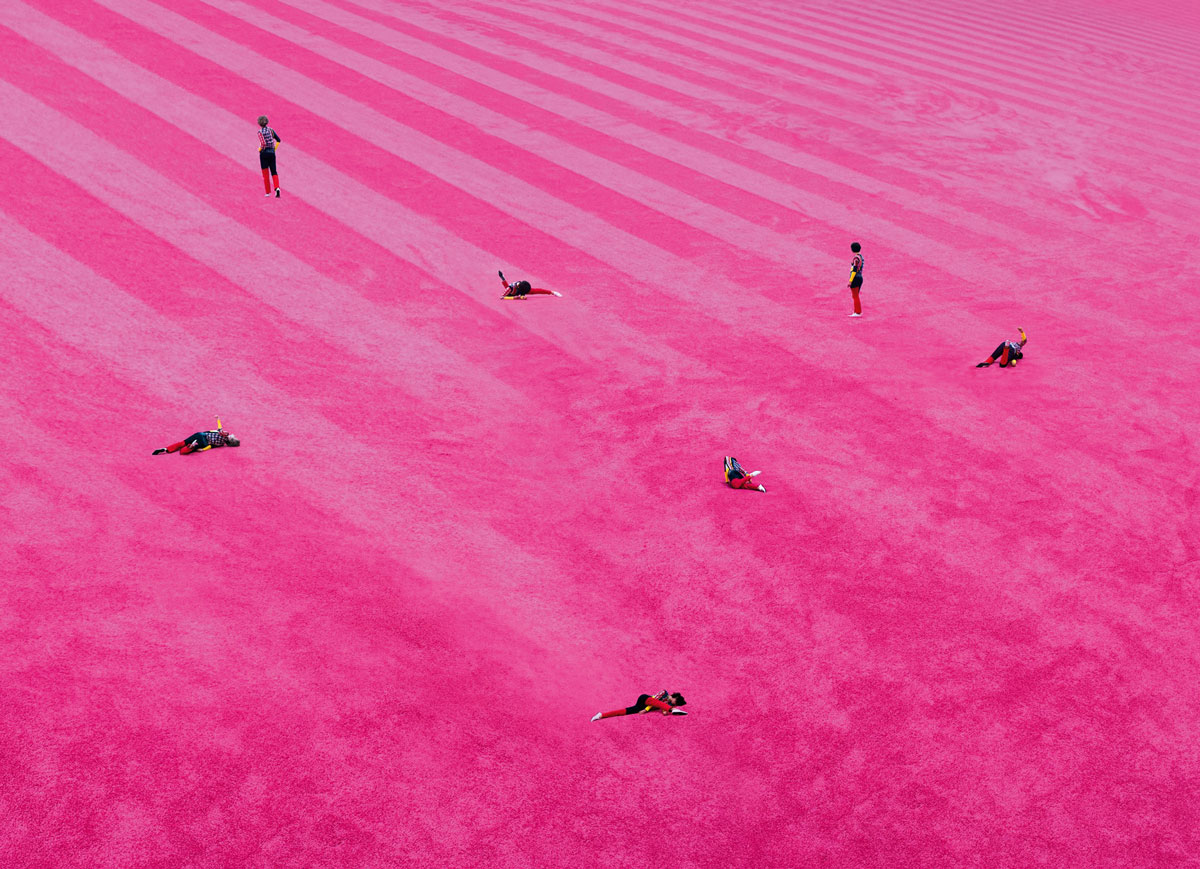
Düsseldorf (2018) #1 (2018) by Maria Hassabi. Courtesy of Deutsche Bank Collection
In 2020, Deutsche Bank is celebrating the 40th anniversary of its art collection, as well as the company’s 150th anniversary. Part of the celebration was intended to involve a major exhibition at Frieze New York. The show, titled ‘Portrait of a Collection’, brought together works from more than 40 artists from the bank’s holdings, including works by Wangechi Mutu, Amy Sillman, Glenn Ligon, Camille Henrot, Lucy Dodd, Hank Willis Thomas and many more. And although the fair was cancelled, the importance of the artworks and the philosophy of the collection remains as relevant as ever.
“Deutsche Bank has both the foresight to champion artists such as these in the early stages of their careers, and the power to contextualize them alongside an established canon within their collection,” Loring Randolph, Director of Frieze New York, tells LUX. She adds that Frieze and the bank are “aligned in their commitment to innovative curatorial programming and public art initiatives, including our mutual support and enthusiasm for artists.”
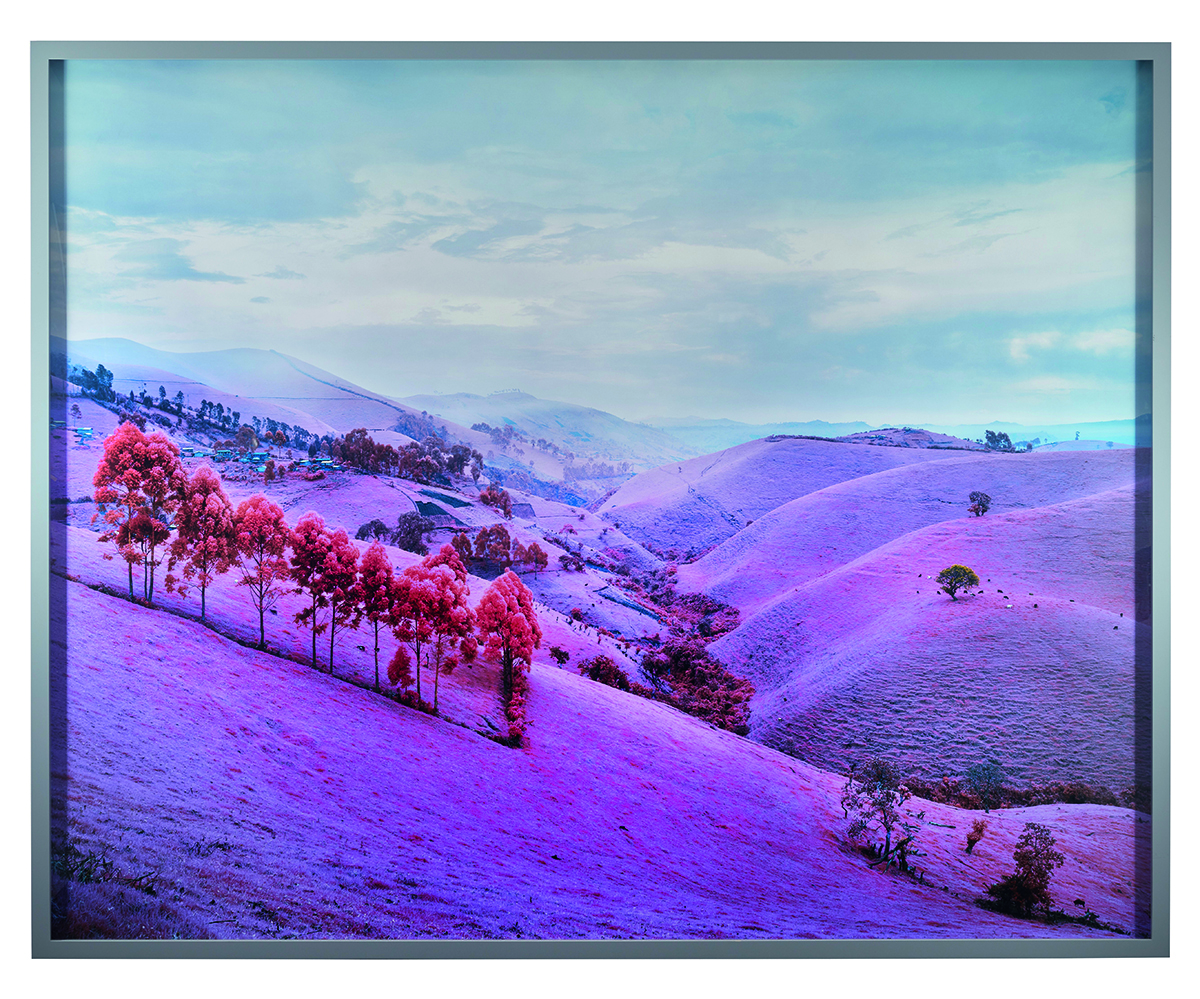
Sugar Ray from the series ‘The Enclave’ (2012) by Richard Mosse. Courtesy of Deutsche Bank Collection. © Richard Mosse, courtesy of the artist and Jack Shainman Gallery, New York, photo Argenis Apolinario.
While Deutsche Bank’s enormous collection spans many decades and various movements of contemporary art, it does have a few points of focus – one being that the vast majority are works on paper. In this respect, Hütte and his team bucked the trend. “The bank decided to focus on an area in contemporary art that’s not so often covered by museums or private collectors,” Hütte says. “We wanted to build a collection that had a smaller focus placed on it. We now have one of the most important collections of post-1945 works made on paper in the world, even when compared with museums of the same era. This has allowed us to function as a kind of archive for artists and museums.”
Read more: Artist Peter Schuyff on the spirituality of painting nothing
Preparatory drawings for larger projects, including studies for public projects by Christo and mural-sized paintings by James Rosenquist, constitute this informal archive. Hütte says he is fascinated by the way these works illuminate the artists’ creative processes. The insights they provide are worth pursuing. “If you are not an expert in art, you can see these works and understand more about how an artist is developing his or her ideas. You see the moment of invention and of introducing something new. This is very much linked to business, and the ways we come up with new ideas.”
“We are always looking to discover new artists,” says Hütte, adding that this “doesn’t mean that the artist has to be young; it could be that an artist is older but hasn’t found the success that we feel he or she should have.” Supporting emerging artists is also a financially advantageous approach; the company does not have to lavish the same kind of sums on their artworks that collectors often pay for well-established artists. Hütte says that the bank, which has high-profile art hanging in offices all over the world, relies on the experience of their own team of curators and – in some cases – regional art experts to look out for creative talent. Additionally, the bank employs staff to oversee the collection, arrange exhibitions, facilitate loans and more.
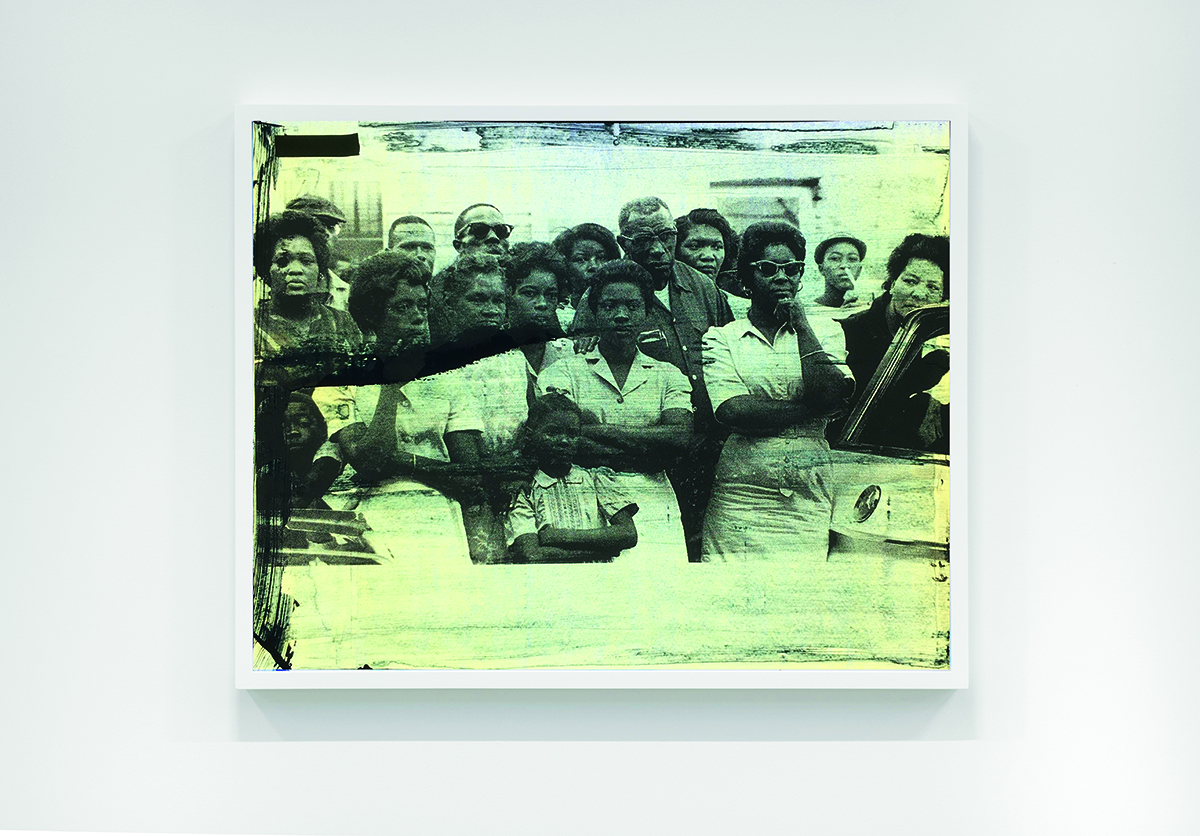
Four Little Girls (blue and white) (2018) by Hank Willis Thomas. © Hank Willis Thomas, courtesy of the artist and Jack Shainman Gallery, New York
While the biggest concentrations of works from the collection hang in the private offices of Frankfurt, London and New York, the bank opened its new museum-quality exhibition space and cultural programme, Berlin’s Palais Populaire, to the public in 2018. However, you may not have to travel to Berlin to explore the art from the company’s private collection. “We loan artworks to museums on a regular basis – normally every week,” explains Hütte. “We feel we have to support the museums and the artists, so there’s no ulterior reason. We give works for temporary exhibitions as well as for more or less permanent loans; for example, we recently loaned 600 works to the Städel Museum in Frankfurt.”
The Deutsche Bank Artist of the Year
One of Deutsche Bank’s initiatives to support young artists is their ongoing Artist of the Year programme. Previous winners include Wangechi Mutu in 2010, Yto Barrada in 2011 and Roman Ondak in 2012. All have since gone on to have exceptional careers. “It’s not simply a prize of a sum of money; it’s really to support the artist so they can reach a new level,” explains Hütte. The artist is selected with the recommendation of the Deutsche Bank Global Art Advisory Council, whose council members have included the curators Udo Kittelmann, Victoria Noorthoorn, Hou Hanru and the late Okwui Enwezor. The winning artist is given a solo exhibition – the 2018 winner, Lebanese artist Caline Aoun, held her show at the Palais Populaire – with a published catalogue of their work. “Most often, it’s the first large catalogue for this artist, and it’s normally their first museum exhibition. We also buy works from the artist for our collection,” says Hütte.
Discover the collection: art.db.com
This article will also be published in the Summer 2020 Issue, out later this month.



